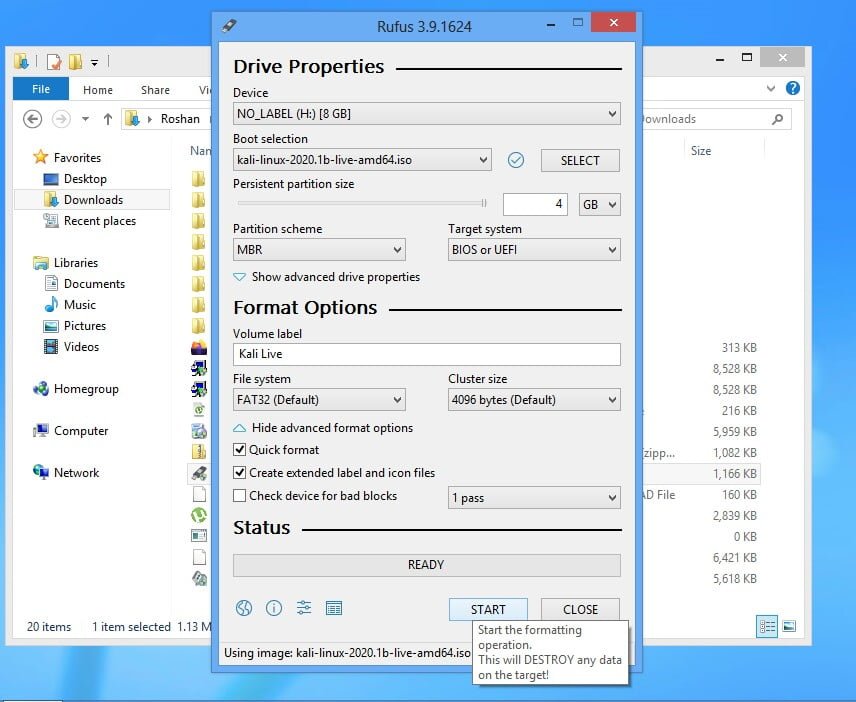
- #Create bootable kali linux usb install#
- #Create bootable kali linux usb drivers#
- #Create bootable kali linux usb Pc#
- #Create bootable kali linux usb iso#
This lab will delete all of the data on the USB. Note: The purpose of this lab is to create a bootable USB that you can use to run Linux from almost any computer. Prerequisites. You’ll need a USB device at least 3 GB in size that you can format.
#Create bootable kali linux usb Pc#
I guess it’s not a huge problem, seeing as it works on another PC as intended and that’s what it would mostly be used for, but it’s still a pain not to be able to update/install things to it on my own PC.This exercise complements the material in the CompTIA Security+: Get Certified Get Ahead: SY0-601 Study Guide. I tried to wait a bit and then login without using my monitor just by using the keyboard but that didn’t bring anything on to my monitor either. It generally starts with big low-res text but then switches to your monitors resolution, but that is where mine fails. I noticed that the point it loses singal to the monitor is the point in the bootup where the scrolling text changes resolution.

It works perfectly fine on my brother’s laptop, but it still just will not work on my PC/monitors.
#Create bootable kali linux usb install#
I ended up nuking that install and re-imaged the USB drive with encrypted persistence. Unfortunately since it was a live install I didn’t have GRUB to boot into recovery mode so I could purge the drivers, and the live (amd64) failsafe option got me nowhere.

Nothing I tried or found could get me past this screen or to a root command line. Before showing the login screen it came to a white screen that said a problem has occurred, please log out and try again.
#Create bootable kali linux usb drivers#
I setup persistence and updated/upgraded, and then went to install the Nvidia drivers as specified on the Kali doc website.Īfter installing those I rebooted and my os pretty much bricked. I was following the instructions on the kali documentation website. I always ran into problems when trying to instal the nvidia drivers.

People were saying it has to do with failed hardware detecting because the Kali image doesn’t have the Nvidia drivers installed, which makes sense but I cannot check because none of the computers in my house have integrated graphics.Īny help with this would be wonderful, and I am still a beginner with Linux so verbose advice is greatly appreciated. That fix as well as most others I’ve seen seemed to be for people attempting to install Kali, not run it from a live USB. I also tried the same method with a different command: “grub_gfxmode=1280x1024x24” but had no luck with that either. The lights on my K70 keyboard and Deathadder mouse stay on like normal, and the internal lights and fans in the PC continue working like normal, but my monitor(s) Say “no signal” and then go into standby mode.ĭoing a bit of research, the only fixes I could find were hitting tab on the boot option and entering “tmode=0” before booting. I hit enter on the “Live (amd64)” option and a bunch of startup text scrolls across the screen, but then my monitor loses signal. I go into my BIOS to boot from my flash drive, and the kali boot screen comes up just fine.
#Create bootable kali linux usb iso#
I created my bootable USB in Win32 Disk imager using Kali rolling 2017.1 ISO on a 64Gb USB 3.0 Samsung flash drive. Hey there, So I’ve been trying to create a live usb with Kali Linux on it but I can’t boot into it from my computer.


 0 kommentar(er)
0 kommentar(er)
